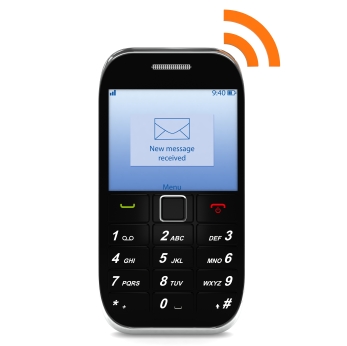How distracting is hands-free texting?
Susan Ladika
California motorists now can legally text when they’re behind the wheel, as long as they do it hands-free. But experts are divided about whether it will contribute to distracted driving.
“We agree that keeping eyes on the road and hands on the wheel are best practices,” says Wade Newton, a spokesman for the Alliance of Automobile Manufacturers, which backed the California legislation.
Despite that, “we know drivers are going to do certain things behind the wheel. We want to make it safer for them to do so,” Newton says.

The new law, which took effect Jan. 1, 2013, lets drivers age 18 and older use voice-controlled, hands-free devices to dictate, send or listen to text messages while driving. Before this law, all forms of texting were prohibited.
“It’s better than hands-held texting, but it’s questionable whether it’s safe,” says Bill Windsor, associate vice president of consumer safety at Nationwide Insurance. “You’re doing something that takes your mind off the driving process.”
While 38 other states have total texting bans, California is the only state that allows hands-free texting, according to the Insurance Institute for Highway Safety (IIHS).
However, even the IIHS isn’t convinced that texting bans work. “There isn’t any evidence that various kinds of cellphone restrictions and texting bans are making the roads safer and decreasing crashes,” says Russ Rader, an IIHS spokesman.
Rader agrees that texting while driving is a dangerous practice. Hands-free texting is thought to be safer, but there’s no solid research to back that up.
“Distracted driving is such a large problem, focusing on electronic devices with laws may not be the best approach,” he says. “It’s only one part (of the problem) and may not be the biggest part.”
Distracted driving: Always dangerous?
Because there’s no research or evidence to confirm that using voice-activated technology eliminates or reduces the distraction to drivers, the National Safety Council is calling on California to repeal the texting law.
The safety council wants a total ban on the use of cellphones while driving, even if motorists are using hands-free devices.
The National Transportation Safety Board (NTSB) also supports such a ban. While the NTSB doesn’t have the power to authorize a nationwide ban, spokeswoman Kelly Nantel says the federal agency works with regulators and lawmakers to improve safety, and the effort to eliminate driving distractions is one of its top priorities.
“We have seen the deadly consequences of distraction – in all modes of transportation – and know that lives can be saved by putting cellphones down while behind the wheel. No call, no text, no update is worth a human life,” Nantel says.
At the California Highway Patrol, officers will continue to cite those who talk or text and don’t use hands-free devices, spokeswoman Jaime Coffee says.
Despite hands-free texting now being allowed in California, “in a perfect world you still wouldn’t even do that,” Coffee says. “It’s basically your job to drive when you’re behind the wheel.”
The state does have an exemption – allowing motorists to use their cellphones in case of an emergency. Otherwise, “the call can wait. The text can wait. The world isn’t coming to an end,” Coffee says.
But Rader says the IIHS wants the focus to be on distracted driving as a whole. Even talking to a passenger, fiddling with the radio or disciplining a child in the back seat draws drivers’ attention from the road.
The IIHS hopes high-tech systems that help drivers avoid crashes will help cut down on accidents if drivers are distracted, Rader says. Some systems monitor the road ahead and warn the driver to take action if he reacts too slowly.
“The systems are really aimed at distracted driving as a whole and bring the driver’s attention back to the road at the critical moment,” Rader says. Those types of systems usually are introduced in luxury vehicles and eventually are installed in less expensive cars.
While hands-free texting eliminates visual and manual distractions, it still creates cognitive distractions, Windsor says. An example of this is a study by Carnegie Mellon University. Researchers studied brain activity of volunteers using a driving simulator. Simply listening to someone speak reduced the amount of brain activity associated with driving by 37 percent.
Windsor acknowledges that a text from your spouse saying “Bring home milk” probably isn’t too distracting. “There’s not a lot of cognitive interaction compared to composing an important business response or witty response to a text,” Windsor says.
Texting and insurance
Research on the effects of hands-free texting is lacking, and car insurers don’t have good data on how it contributes to crashes, Windsor says.
In 2010, the National Safety Council attributed 1.6 million crashes each year, or almost 30 percent of all crashes, to texting and cellphone use.
The National Highway Traffic Safety Administration reports that of the 32,367 traffic deaths in 2011, more than 10 percent of the victims were killed in crashes involving distracted drivers.
Windsor says insurers can’t say exactly how texting and driving affects car insurance rates. In most states, if you receive a ticket for texting, you won’t get points on your driver’s license. In states such as New York, which do assess points, texting and driving could raise your rates.
If texting while driving contributes to crashes, it also contributes to higher insurance rates for all motorists, he says. “It’s not only the people who have crashes,” Windsor says. “The risk is spread among everybody who has insurance.”
